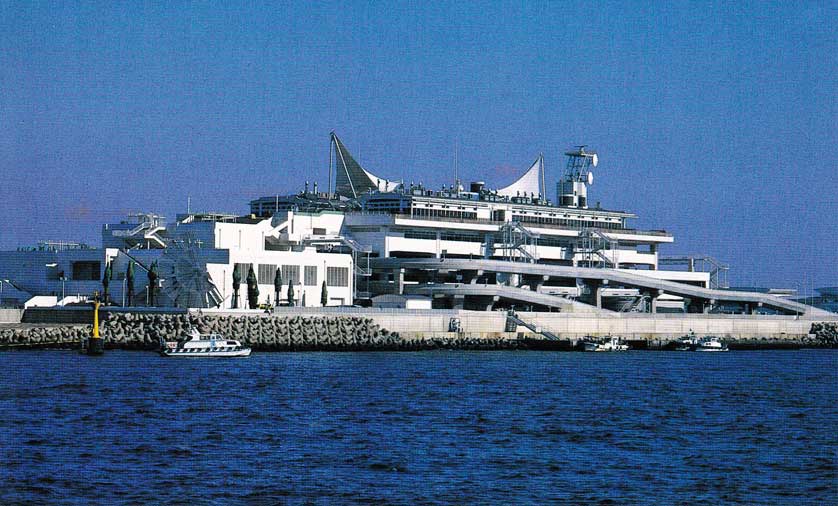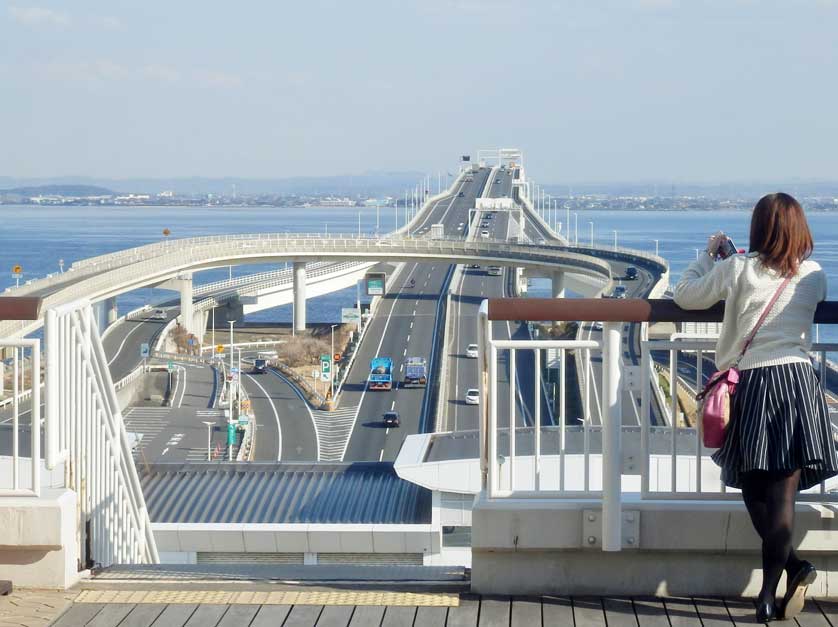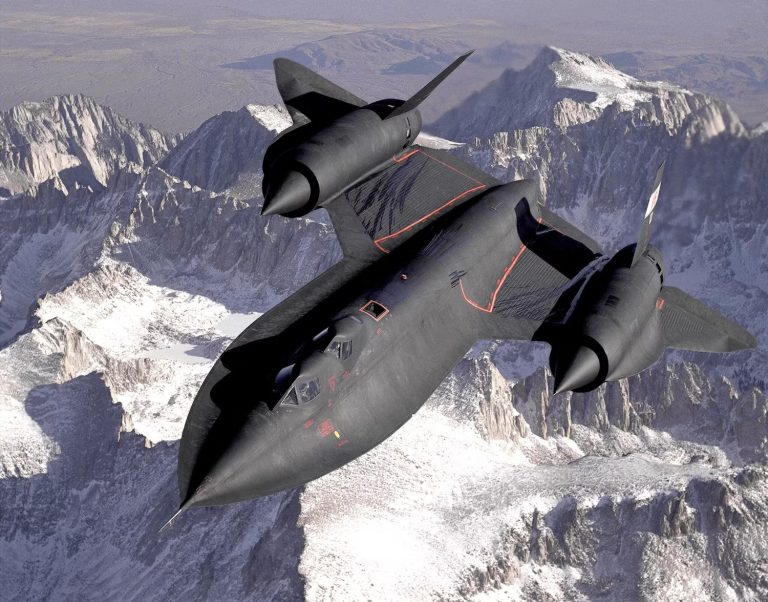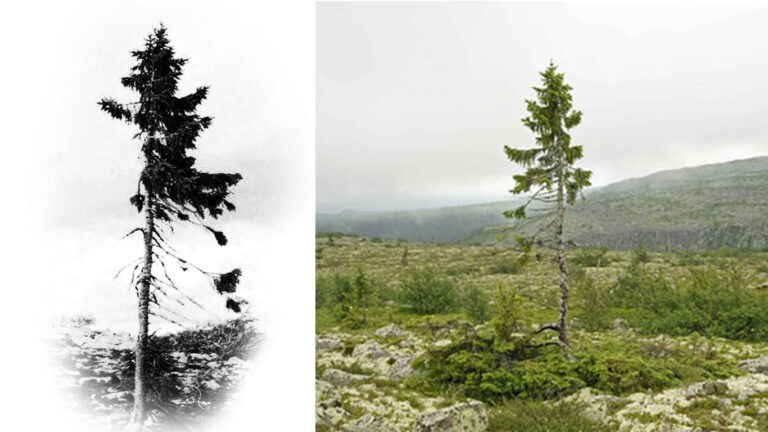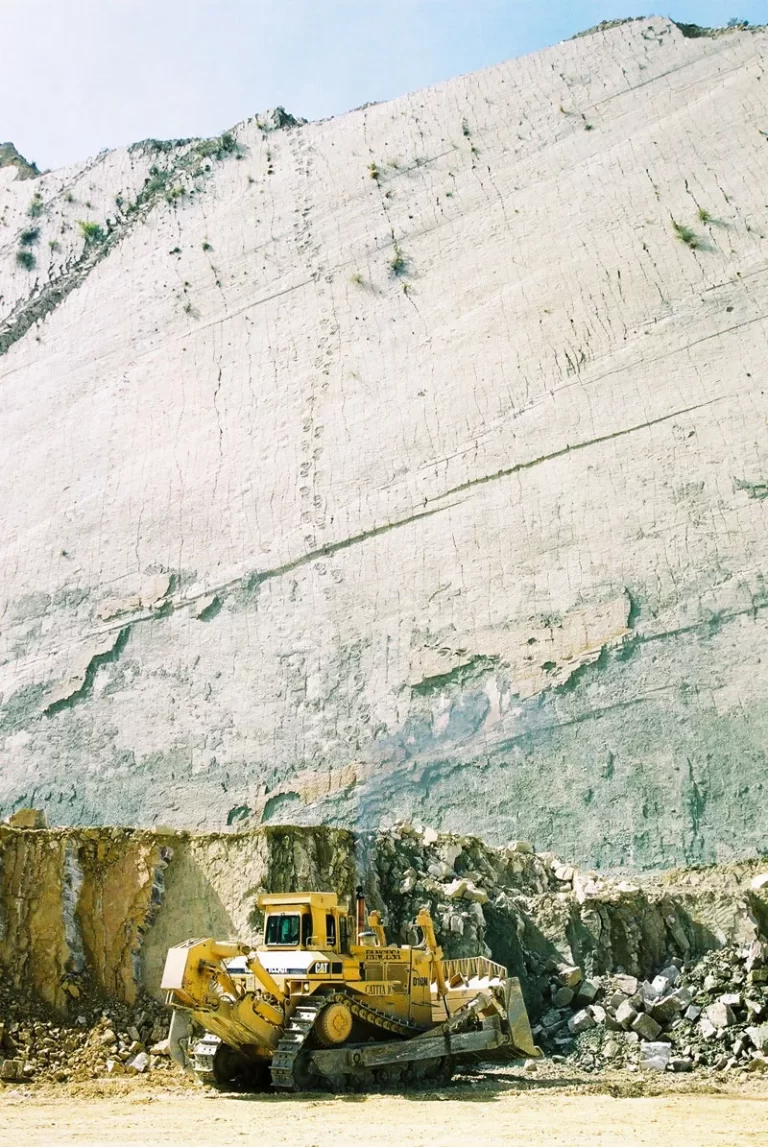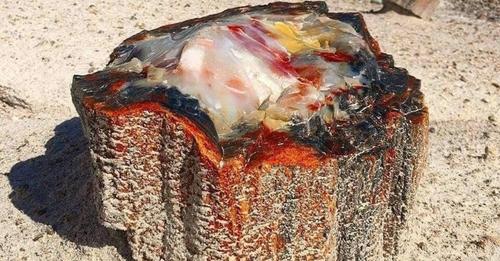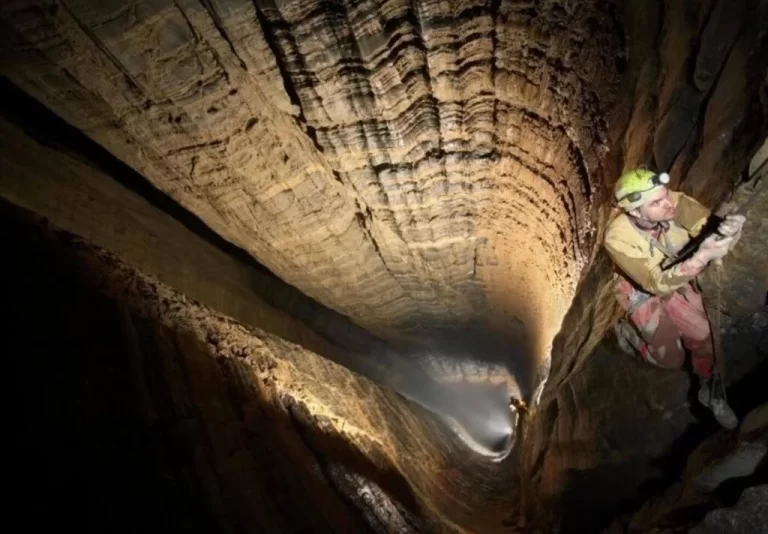Tokyo Bay Aqua Line: A marvel of engineering connecting Kanagawa and Chiba
The Tokyo Bay Aqua Line, also called the Trans-Tokyo Bay Highway, is an impressive engineering project that connects Kawasaki in Kanagawa Prefecture with Kisarazu in Chiba Prefecture. This 23.7-kilometer road is a mix of a bridge and a tunnel, providing a distinctive travel route across Tokyo Bay. Opened on December 18, 1997, after 23 years of planning and 9 years of construction, the Aqua Line plays an important role in Japan’s transportation network. It has greatly shortened travel time between two major industrial areas. In this article, we’ll look at its importance, technical details, special features, and how it boosts regional connectivity.
Overview and significance of the Tokyo Bay Aqua Line
The Tokyo Bay Aqua Line is a key transportation route that has made travel between Kanagawa and Chiba Prefecture much easier. Before it was built, people had to drive 100 kilometers around Tokyo Bay, passing through the busy center of the capital. Now, thanks to the Aqua Line, they can cross the bay in just 15 minutes.
This expressway has two main parts:
– A 9.6-kilometer underwater tunnel called the Aqua Tunnel
– A 4.4-kilometer bridge known as the Aqua Bridge
The Aqua Line has not only made travel quicker but also boosted the economy in the area. It has improved connections between the industrial zones in Chiba and Kanagawa, made it easier to visit leisure spots on the southern Bōsō Peninsula, and helped reduce traffic in central Tokyo.
Technical specifications and construction details
Building the Tokyo Bay Aqua Line was a massive engineering challenge that demanded innovative solutions and advanced technology. Some key technical facts include:
– The tunnel goes 60 meters below sea level at its deepest point
– The tunnel has a diameter of 13.9 meters
– The longest span of the bridge is 240 meters
– The expressway is 22.9 meters wide, with four lanes of traffic
– The project cost ¥1.44 trillion (US$11.2 billion) to complete
To dig the tunnel, engineers used advanced shield machines that weighed 3,200 tons and had a diameter of 14.14 meters. These huge machines were essential for navigating the tough undersea conditions.
The project also had to account for environmental challenges like soft seabed soil, wind, tides, and the risk of earthquakes. Engineers had to create new technologies and construction methods to handle these issues, earning the project the nickname “Apollo project of civil engineering.”
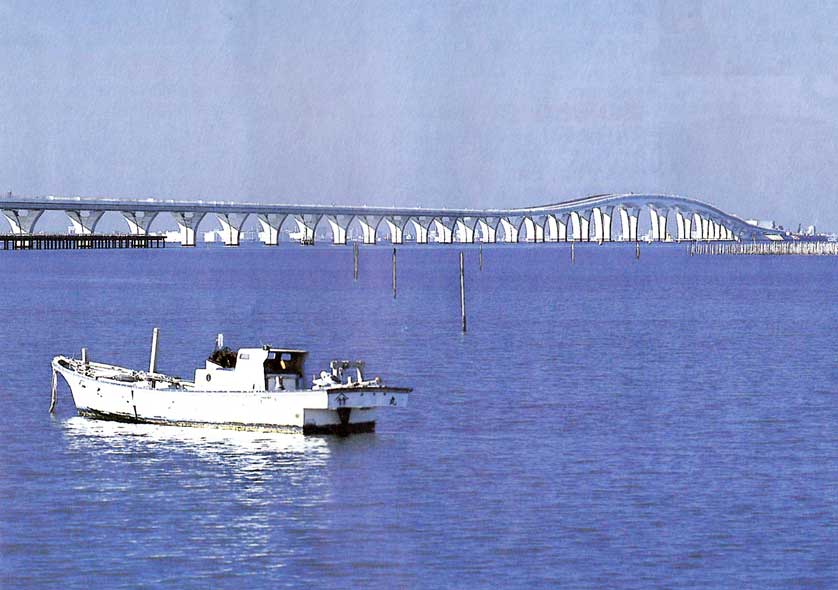
The unique Umihotaru artificial island
Umihotaru, meaning “Sea Firefly,” is an impressive man-made island that connects the tunnel and bridge sections of the Aqua Line. But it’s more than just a stopover for travelers:
– The lower three floors are dedicated to parking.
– The top two floors feature restaurants, souvenir shops, and viewing platforms.
– Visitors can take in sweeping views of Tokyo Bay from the observation decks.
– The Aqua-Line Theater offers a glimpse into the engineering behind this remarkable project.
Umihotaru has become a popular destination, attracting visitors who come to admire its unique design and breathtaking views. On clear days, you can see the Tokyo Skytree, Yokohama’s skyline, and even Mount Fuji in the distance.
Tolls and cost considerations for travelers
While the Tokyo Bay Aqua Line saves time, it comes with a price. Here’s the toll breakdown:
– Regular cars: ¥3,140 in cash (¥2,320 with an ETC card)
– Small cars and motorcycles: ¥2,510 in cash (¥1,860 with an ETC card)
– Large vehicles: ¥5,190 in cash (¥3,830 with an ETC card)
To encourage more drivers to use the expressway, ETC users get discounts, with tolls reduced to ¥1,000 on weekends and holidays. However, the relatively high cost has sparked debate and limited the expressway’s effectiveness in reducing traffic in central Tokyo.
You may also like :World’s First ‘Floating Tunnel’ Project In Norway
For budget travelers, buses that use the Aqua Line are available. A one-way trip from Kawasaki Station to Umihotaru costs ¥1,080, and a trip to Kisarazu is ¥1,440.
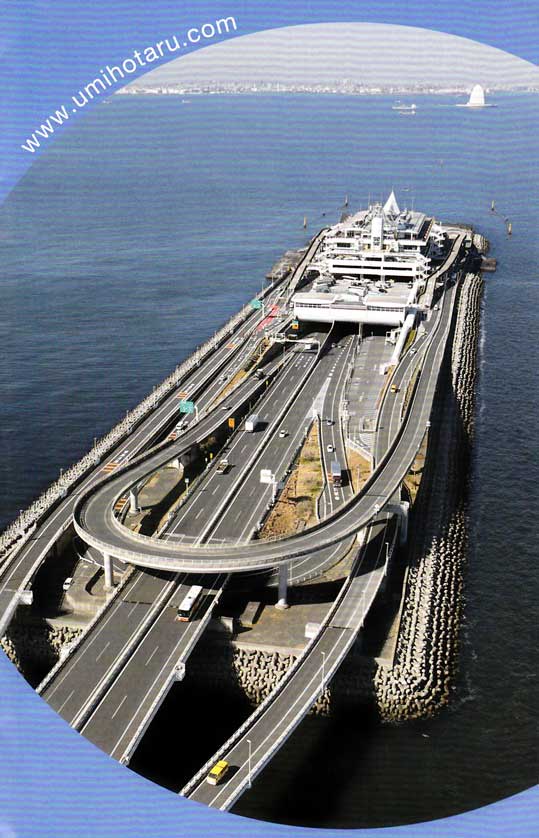
Impact on travel time and regional connectivity
The Tokyo Bay Aqua Line has greatly improved travel times and regional connections:
– The trip between Chiba and Kanagawa has been shortened from 90 minutes to just 15 minutes.
– Travel from Haneda Airport to Kisarazu is now about 45 minutes faster.
– The expressway has made it easier to visit the Boso Peninsula, boosting tourism in the area.
This improved connectivity has brought several positive effects:
– Kisarazu has seen an increase in population and tax revenue.
– More commuters are using bus services across the bay.
– Property values have risen in areas near the Aqua Line.
– The estimated economic benefits reached ¥86.9 billion between April 2014 and September 2016.
However, not all of Chiba Prefecture has benefited equally, with some northeastern areas yet to experience significant changes from the expressway.
Environmental considerations and the Kaze no Tō
The Tokyo Bay Aqua Line project was designed with several environmental considerations in mind:
– The Kaze no Tō (Tower of Wind) provides ventilation for the tunnel.
– The tower harnesses the bay’s steady winds to generate power.
– Recent LED upgrades on the bridge have cut power use and carbon emissions by 40%.
The Kaze no Tō, designed by renowned architect Toyo Ito, is a striking structure that emerges from the sea halfway along the tunnel. Its two towers, shaped like wind-filled sails, capture the bay’s winds to ventilate the tunnel below. Though not open to the public, the tower has become an iconic feature of the Tokyo Bay skyline.
During construction, the project carefully managed the marine environment and continues to monitor its effects on Tokyo Bay’s ecosystem.
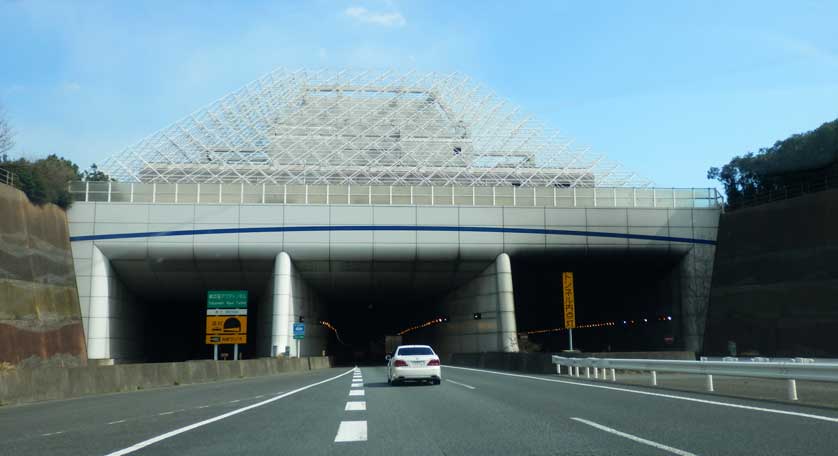
Experiencing the Aqua Line: Driving and public transportation options
Travelers have a few ways to enjoy the Tokyo Bay Aqua Line:
**Driving:**
– Personal vehicles can use the expressway, with tolls collected on the Kisarazu side.
– The drive offers unique views, from industrial landscapes near Kawasaki to more open scenery in Chiba.
– Drivers can stop at Umihotaru for a break, a meal, or sightseeing.
**Public Transportation:**
– Several bus services use the Aqua Line, connecting various Tokyo stations with destinations in Chiba.
– Buses run frequently during the day, and some stop at Umihotaru.
– The last buses from Umihotaru leave for Kawasaki at 5:56 PM and Kisarazu at 5:29 PM.
Whether you’re driving or taking public transport, the Tokyo Bay Aqua Line offers a special travel experience. The journey showcases Japan’s engineering skills, with its long undersea tunnel, vast bridge, and the unique Umihotaru rest stop providing stunning views of Tokyo Bay.
When planning your trip, check the weather, as the expressway may close during typhoons or severe storms. For a memorable experience, consider timing your visit to Umihotaru to catch the sunset or the illuminated Tokyo skyline at night.
